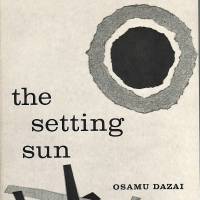Career nihilist Osamu Dazai had already attempted suicide four times when he published his most famous novel in 1947. "The Setting Sun" quickly became a byword for the decline of Japan's aristocracy in the wake of World War II, but its portrait of a country adrift from its spiritual moorings would resonate with a far wider audience.
The book's narrator, Kazuko, is the 29-year-old daughter of a once-rich family whose fortunes have taken a turn for the worse. Forced to leave their luxurious Tokyo home, she and her mother move to a villa on Izu Peninsula. But the fragile harmony of their diminished existence is upset by the return of Kazuko's brother Naoji, a former opium addict who had been lost in action during the war. As their mother's health deteriorates, Naoji squanders the family finances on drinking trips to Tokyo, while Kazuko attempts to secure her own survival by foisting her affections on one of his friends, an alcoholic novelist.
Though not as autobiographical as Dazai's subsequent novel, "No Longer Human," "The Setting Sun" draws heavily on his experiences. The child of a wealthy landowner, he had tasted the kind of privilege that his protagonists are forced to abandon. He'd also fathered a child with one of his fans, Shizuko Ota, whose diaries provided the basis for the book.
"The Setting Sun" would transform its author into a celebrity, the literary poster child for Japan's postwar malaise — for a brief moment, at least. Already succumbing to tuberculosis, alcoholism and overwork, Dazai finally succeeded in taking his own life in 1948, just shy of his 39th birthday.
Each week "Essentials" introduces a work of fiction that should be on the bookshelf of any Japanophile.



